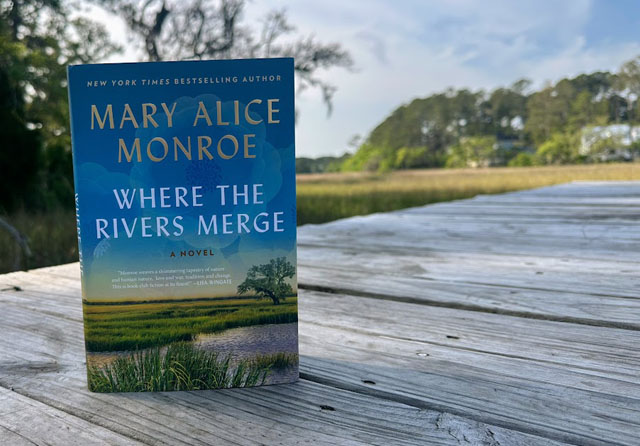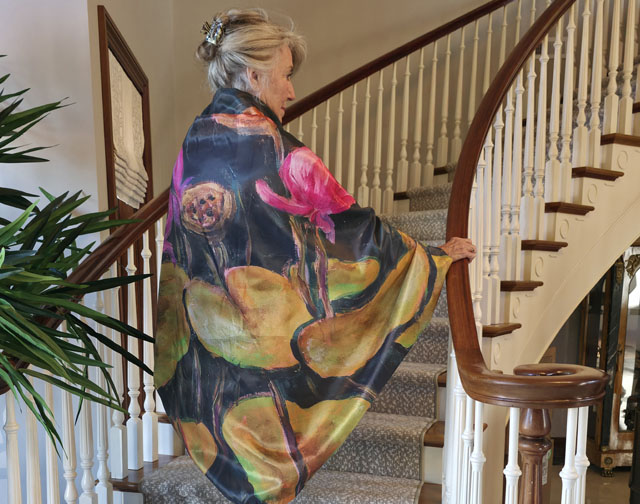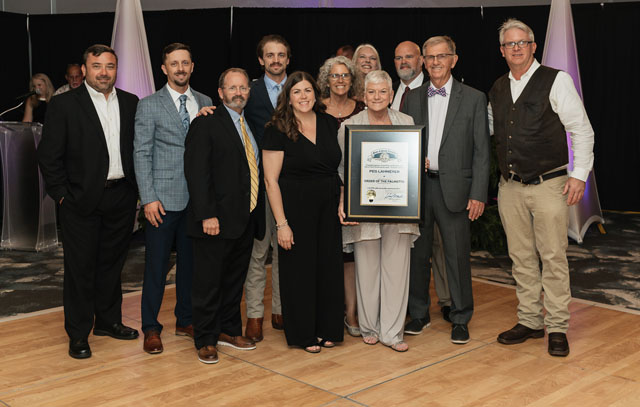Where the Rivers Merge
03 Jul 2025
Mary Alice Monroe on legacy, land and the power of one candle
July-Aug 2025
Written By: By Pamela Jouan | Images: Photo Anne Rhett Photography

In her sweeping new novel “Where the Rivers Merge” (part one of a duology), beloved author and environmental storyteller Mary Alice Monroe brings readers into the heart of South Carolina’s Ace Basin — not just as a setting, but as a living, breathing character worthy of reverence and protection. Told through the voice of Eliza, a steely matriarch shaped by both love of land and personal hardship, the story is as much a generational saga as it is a meditation on conservation, belonging and spiritual connection.
For Monroe, the journey of this book is deeply personal. “The voice of Eliza came quickly — she just sang out,” Monroe relayed. “That child who loved to get lost in the woods and make clover crowns — that was me.” Through Eliza, Monroe channels her own coming-of-age as a girl also growing up in a world where women's ambitions were often capped by societal norms. "Even my educated father leaned on what the boys needed,” she recalled. “Girls were expected to be wives and mothers. That lack of value is something I made strong in Eliza’s character.”
Yet, “Where the Rivers Merge” isn’t merely historical fiction. It is, in many ways, Monroe’s most introspective novel to date. A departure from her species-focused earlier works, this book steps back to look at the broader picture: the land itself. “I finished 20 years tackling individual environmental issues and put that on the shelf. I wanted to write with a bigger scope,” she explained. “It felt more important now to talk about habitat and natural resources as a whole, so people would understand what’s at stake — not just species by species but as a planet.”
That shift in focus mirrors Monroe’s own evolution as a conservationist. After two decades spotlighting sea turtles, dolphins and other threatened animals, “Where the Rivers Merge” is her call to widen the lens. In telling Eliza’s story — about a girl whose stubborn loyalty to her family’s Mayfield land leads to the gradual shift toward seeing the greater good — Monroe hopes to guide readers toward a Rousseau-like awakening. “We all need to become part of the planet, not just owners of it,” she said.
The land Monroe writes about is real. The ACE Basin, a convergence of the Ashepoo, Combahee and Edisto Rivers, is one of the largest undeveloped estuaries on the East Coast. It’s also where history and conservation intersect in compelling ways. “The story of the ACE Basin is extraordinary,” Monroe explained. “It has sea, sky, air, wildlife, vast acreage and what a history! When the rice plantations went fallow, the ducks settled in, and then the northeastern ‘damn Yankees’— like the Vanderbilt’s and the DuPont’s — came to hunt. But they stayed, fell in love with the land and became good stewards. In the 1980s, the ‘been-here’s’ and these ‘come-here's’ came together to save it. That’s rare.”
Monroe weaves this rich history into Eliza’s life, grounding fictional drama in ecological truth. “I based Eliza on actual families,” she revealed. “It’s a composite, and I needed permission to use some names.” But the emotional and legal battles over land conservation? All real. The novel captures the complexities of those decisions — how conservation can seem illogical, even disruptive, to families grappling with inheritance and identity. “Why would anyone put land in conservation?” Monroe mused. “You can’t sell it. Families fight over it. But for someone like Eliza, it’s about love.”
That love of land isn’t abstract for Monroe. It’s visceral, sacred. She sees spirituality rooted in nature. “Whether I’m in the mountains or at the beach, the phenomenon is the same; it’s what I call the power of infinity.” Her words echo a quiet reverence, describing how the vastness of the sea or the mountains can make life’s problems seem “infinitesimal”— and yet, paradoxically, make her feel bigger because of the deep connection to something beyond herself.
It’s a sensation she encourages readers to harness in their own lives. “Find a vista that makes you feel that connection,” she advised. “Keep that with you when you go home. It gives you equilibrium for when you’re facing bills or arguments with the children.”
That sense of balance is something Monroe has cultivated since her earliest years. “As a child, I’d water the skinniest neighborhood trees and sing to them and gather dandelion bouquets — anything to bring the outside in,” she recalled. But it wasn’t until she was a young bride visiting her husband’s family farm in Vermont that her passion crystallized. “That’s where I really learned about trees and birds, teaching my kids as I learned myself. It was so much fun —and that joy is what I wrote in my middle grade series, “The Islanders,” too.”
Calling the South home, Monroe writes from a place of deep rootedness. “There’s a dune at the end of my street on Isle of Palms where I sit at night and listen to the ocean,” she shared. “That reassuring murmur — that’s my tree hollow,” she smiled, a reference to symbolism in the book.
It’s no surprise that she encourages others not to join a cause for the sake of it, but to start where they are. You don’t have to be part of a conservation group. “If you live on a farm in the Midwest or have a postage stamp backyard, I want every reader to feel connected to their own piece of land so that they know how to protect it. Just look around you. Take care of what’s yours.”
Ever since she was a little girl, Mary Alice Monroe has wanted to save the world. She recalls her father’s advice, “Don’t worry about the whole world, Mary Alice. Just light one candle.” With “Where the Rivers Merge,” Mary Alice Monroe has lit hers — again — and now offers readers a flame to carry forward.
BIO
Mary Alice Monroe, Author
Hometown: Evanston, Illinois
Education: Bachelor’s degree in Asian Studies and Japanese and master’s degree in education from Seton Hall University. She also studied at Northwestern University and the Ted Liss Studio for Performing Arts.
Hobbies: Mary Alice is an avid naturalist and conservationist.
Family: Mary Alice is blessed with a husband, children and grandchildren. A fun fact is that her daughter Greta painted the famed turtle mural on Isle of Palms.












